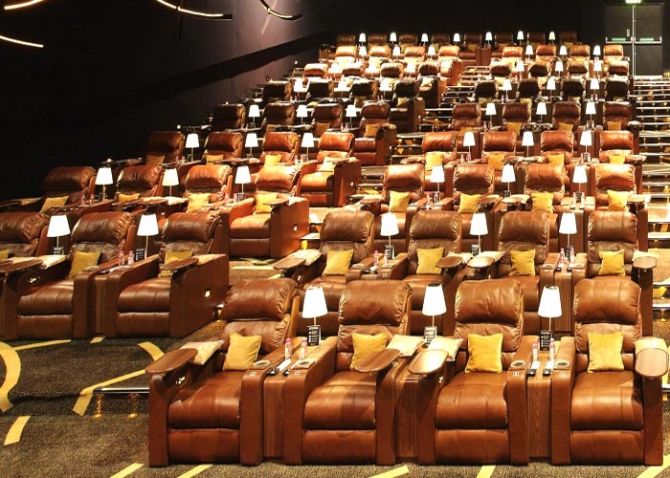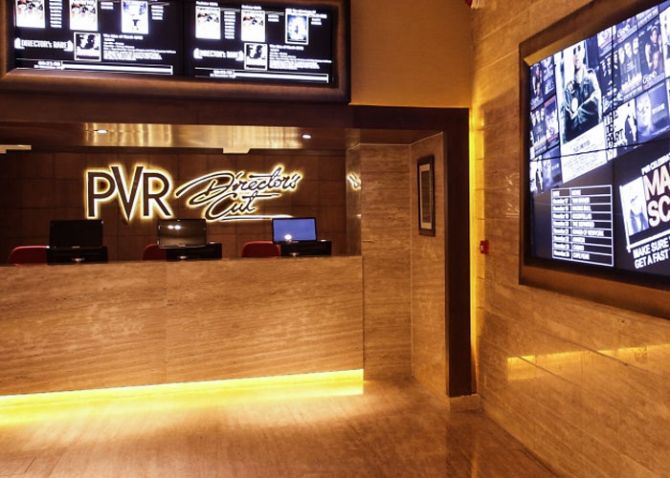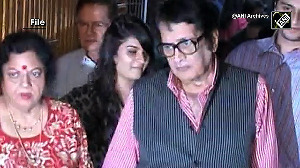Theatres are finding innovative new ways to increase footfalls, discovers Vanita Kohli-Khandekar.

Is it a multiplex or an experience?
As PVR Cinemas, Cinepolis, Inox and Carnival, among other multiplex chains, spend crores building high-end lounges, recliner seating and restaurants, the question is more than academic.
About 12-15 per cent of the ₹2,182 crore PVR Cinemas's operating profits and 10 per cent of its revenue come from its high-end offerings such as Gold Class and Director's Cut, which brought in just about three per cent of its 75 million admissions last year.
There is the usual recliner chairs, usher on call and so on.
But Director's Cut, launched in 2012, took it to a whole new level with a sushi bar curated by Yutaka Saito, a famous Japanese chef, desserts from the very fancy patisserie L'Opera (added this year) and a wine lounge for its 1,000-odd Sapphire Club members.
Incidentally, they also get complimentary chauffeur-driven pick-ups and drops in an Audi, priority bookings and a dedicated relationship manager among other perks.
"The whole retail sector is changing and cinema is entertainment retail. Luxury is a misleading term (for what Director's Cut offers) because it connotes expense. This really is about the experience," says Renaud Palliere, CEO, The Luxury Collection.
Ajay Shah, partner, transaction advisory services, telecom, media and technology, EY, thinks that "in the long run, a dedicated premium offering is a smart move. With the onslaught of digital, virtual reality, Amazon, Netflix and all the other services, cinema-going has to become an experience".
While digital has added to the revenues of the ₹14,230 crore Indian film industry, it could, just like TV, reduce the audiences walking into a theatre.
The number has been falling steadily over the years, thanks to piracy and TV.
The maths and science of luxury

The maths is simple; it is the science of luxury within multiplexes that is complex.
The average ticket price or ATP at PVR was ₹196 in 2016-17. It is ₹1,200 at Director's Cut.
Note that the ₹1,200 figure does not include spends on food and all the other bells and whistles.
The specifics on margins, costs, revenue expectations and the actual product differ hugely from chain to chain, since each has a its own take on luxury.
Cinepolis, the world's fourth largest chain, had launched the recliner seat first in 1997, says Devang Sampat, director, Cinepolis India. In this country, Cinepolis VIP has been available for four years now.
Sampat explains that one recliner seat in the VIP section occupies 2.5 times the space of a regular seat. Therefore, "we need to get 2.5 times more revenue (on VIP) whether on food and beverages or on ticket sales", he says.
According to analysts, if the gross margins on food and beverages are 75 per cent on the regular ticket, they are higher on a premium ticket. But it is also a "high-risk" strategy, says Shah. That is because ultimately, if the content doesn't work and people don't walk in, all the luxuries on offer become a huge drain on operating costs.
Therefore, "chains have to be selective and careful about where to put up such screens", says Shah. Currently, just 33 of PVR's 600 screens have high-end offerings.
Only 15 of Cinepolis's 325 screens in India are branded VIP. "Megaplexes (such as Cinepolis) cater to all kinds of segments. It (VIP) is just another segment where the propensity to pay is higher," says Sampat.
What is luxury

PVR's gourmet-driven investment then is not true for the rest of the multiplex industry.
Wave Cinemas, for instance, has a Platinum Lounge in two of its properties. But Yogesh Raizada, vice-president, Wave Cinemas, says it is more like a value added service where you buy a ₹1,200 ticket and get a range of extra services like plush seats, an usher et al.
Dina Mukherjee, chief marketing officer, Carnival Cinemas, reckons, "The definition of luxury depends on the city. In many cities, a neat clean hall is a luxury. Therefore Carnival is a luxury chain in tier-II and III cities. In mini metros, it is in the value segment."
It offers marquee units and special lounges with wine and gourmet food in 10 per cent of its 115 locations (which house 425 screens). But, "we wouldn't go competing with restaurants", she says.
That is exactly where PVR has ramped up the game. "The content is not different. (Therefore) food is a big element of differentiation. There is a strong segment at the top where people are prepared to pay for a quality experience," says Palliere. The big challenge -- getting those people in. A mix of screens across the price spectrum therefore is critical.
Ajay Bijli, chairman, PVR Cinemas, reckons, "The criteria for return on investment (for PVR) remain the same whether it is a ₹1.5 crore screen or a ₹5 crore screen because for the lower cost screen the operating expenses are lower."
It plans to take its high-end screens from 33 to 73 in three years.
There are plans to go to Dubai and other markets with the gourmet experience attached to Indian films.
Experience, it seems, is going places.
Photograph: Kind courtesy, PVR Director's Cut












 © 2025
© 2025